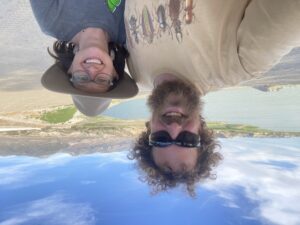We know many of you have been wondering why we no longer have a butterfly house. The short answer is that we have some exciting new jobs outside our work with NV Bugs, that butterfly declines have made it harder to run a butterfly house, and that we have been concentrating our Nevada Bugs & Butterflies time on documenting rare butterflies in Nevada (you can read more about this in our previous blog post).
Butterfly declines in Nevada make it harder to run a native butterfly house
Even since the first year of our Butterfly House in 2013 we have experienced a decline in the number of butterflies we see. The most well-documented decline has been in the western monarch population- millions of monarchs could be found at their overwintering sites in the 1980’s but less than 5% of that number overwinters today (more info here and here). This has led many scientists and monarch experts to suggest it is no longer prudent to collect wild monarchs and raise them in captivity. If you visited our butterfly house in the past, you know that monarchs were a very important part of the experience! As we are out looking for butterflies in the summer we certainly notice other species that were once more common are harder to find now. Recent research done in part at UNR by our mentor and collaborator, Matt Forister suggests there is a 1.6% yearly cumulative decline in western butterfly abundance. This means that every single season there are on average 1.6% fewer butterflies seen by community scientists compared to the year before. As Matt says, it doesn’t sound like a lot, but imagine if every year your bank account was decreasing by 1.6%!
Because we are committed to protecting the amazing diversity found in Nevada, we are hesitant to collect our breeding butterflies from the wild at this time. We are still hopeful it is possible to responsibly run a native butterfly house in Northern Nevada in the future.
Our new jobs with bugs!
On a more personal note, both Kevin and Cynthia have exciting new jobs- jobs that were not available back when we were running our science center and butterfly house. Kevin is now working for the Xerces Society as a conservation biologist studying western butterfly declines and working with partners to protect our most at-risk species. Cynthia is still the Education and Collections Coordinator for the UNR Museum of Natural History, and recently she has been able to take on more insect curation duties at the museum, in addition to her science outreach work. As you may know, the museum holds all of the University’s plant and animal collections, including valuable insect collections from across the Americas. Curating these collections- organizing them, updating scientific names, and preventing pest infestations- takes a significant amount of time, and it is important work to maintain these collections for researchers and museum visitors. You can schedule a free visit to the UNR Museum of Natural History on their website.


